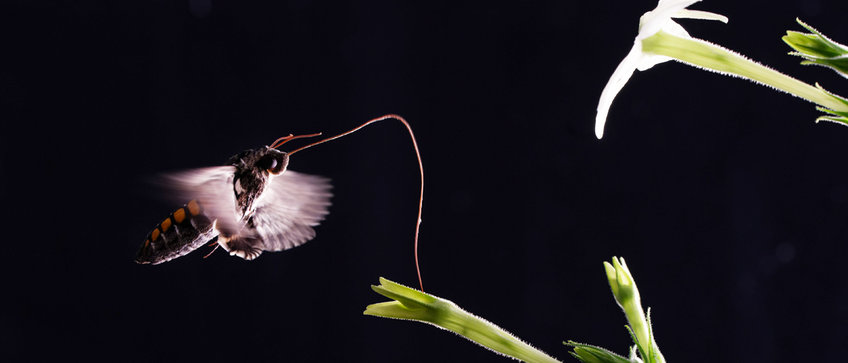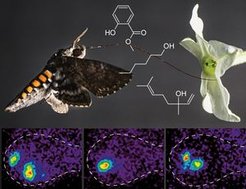
Lepidopteran Neuroethology
We investigate the impact of olfaction on different aspects in the life history of moths: finding valuable food sources, choosing a conspecific mating partner, and, in the case of female moths, deciding which plants are appropriate substrates to lay eggs.

We are especially interested how ecologically important volatile compounds are coded in the antennal lobe, i.e. the first olfactory processing centre of the insect brain. By using calcium imaging, we record in vivo the odour-evoked neural activation patterns, and compare these patterns across moth species with different phylogenetic relationships and life histories. To assess the significance of odours for moths, we perform behavioural experiments under controlled conditions in a wind tunnel, or during summer months under semi-natural conditions in a large tent. Correlating odour-evoked brain activity and odour-guided behaviour will reveal how olfactory valence is encoded in the brain. For behaviourally relevant odours, we will then (together with the group Olfactory Genes) use a recently established molecular method (DREAM) to identify the corresponding olfactory receptors. We are also planning to use the new tool CRISPR/Cas9 to silence these receptors in order to study their functional significance for the moth.
Our model animal is the sphinx moth Manduca sexta that we continuously breed in our lab. We also investigate other moth species like the domesticated silk moth Bombyx mori and the wild silkmoth Bombyx mandarina.
For more information, also regarding topics for bachelor or master theses, please contact Sonja Bisch-Knaden.
